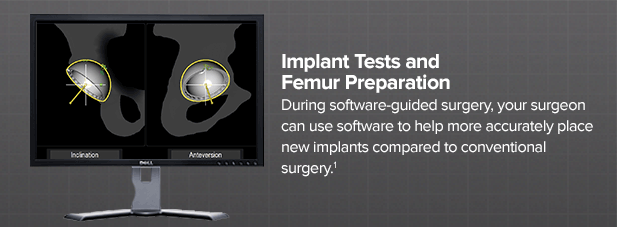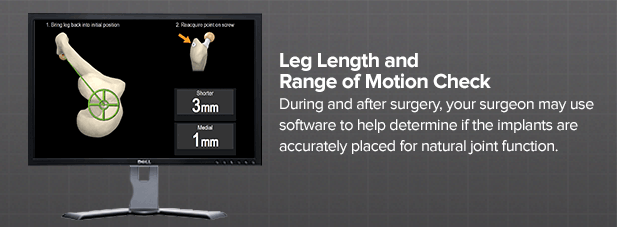
Once surgery has begun, your surgeon uses navigation to ‘track’, ‘see’ and ‘control’ the angle and position of the cup and to navigate it into the planned position.
To prepare the femur for placement of the stem portion of the implant, the surgeon first drills a tunnel along the inside of the thighbone to open the stem. The stem may be cemented or simply held in place by the tightness of the fit. A metal ball is attached to the end of the implant stem which fits into the artificial socket now placed inside the hip bone.
A plastic or metal liner is placed in the hip socket cup to provide smooth joint movement. These three components replace the natural ball and socket joint.

With trial implants in place, your surgeon will use surgical navigation to perform a leg length check. The results displayed on the computer monitor can be checked against the preoperative plan and the implant size or style can be changed if needed.
During and after surgery, your surgeon verifies the fit and range of motion of the hip replacement components. By mimicking the anatomy and function of the natural hip joint, hip replacements can reduce pain and permit a return to many activities.